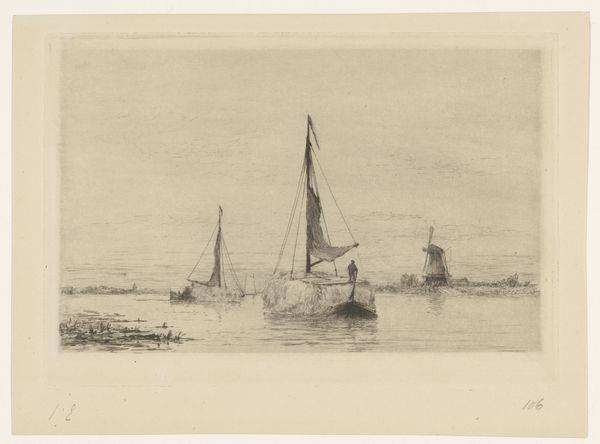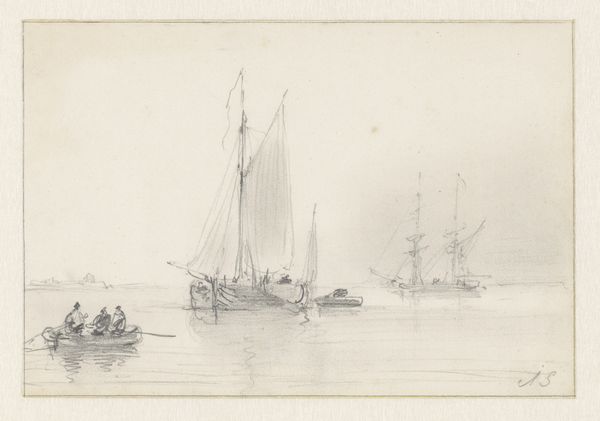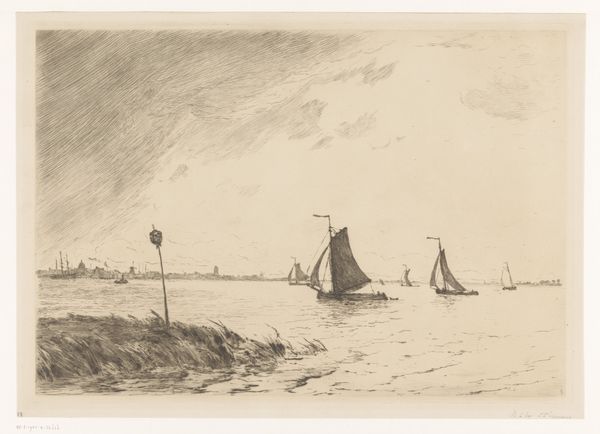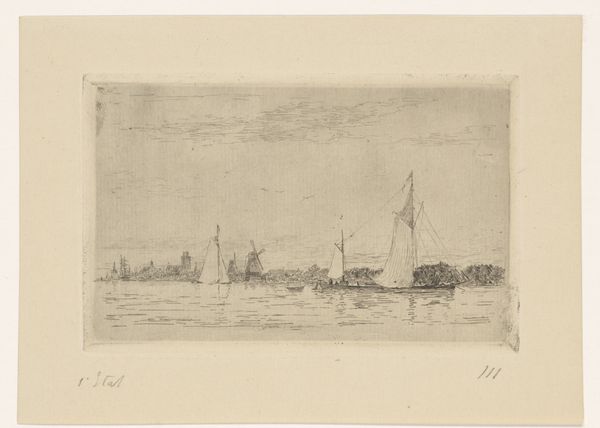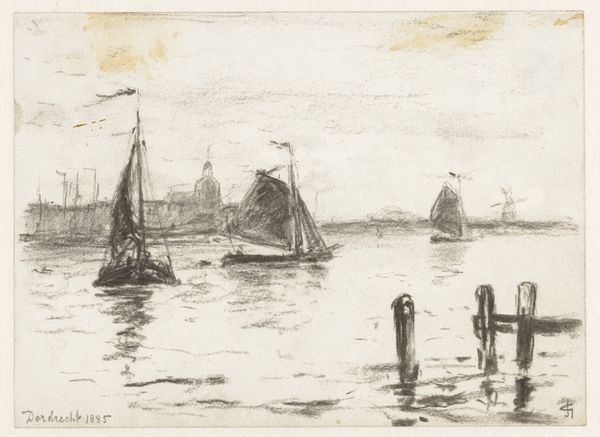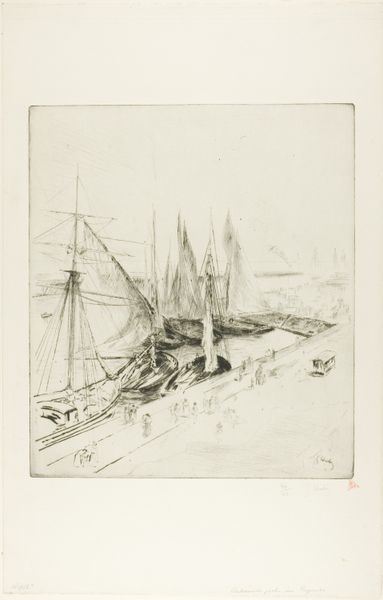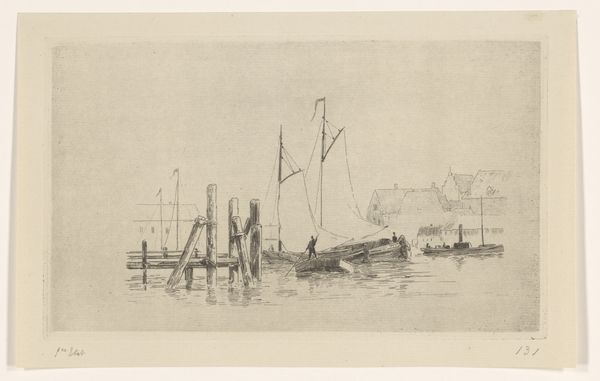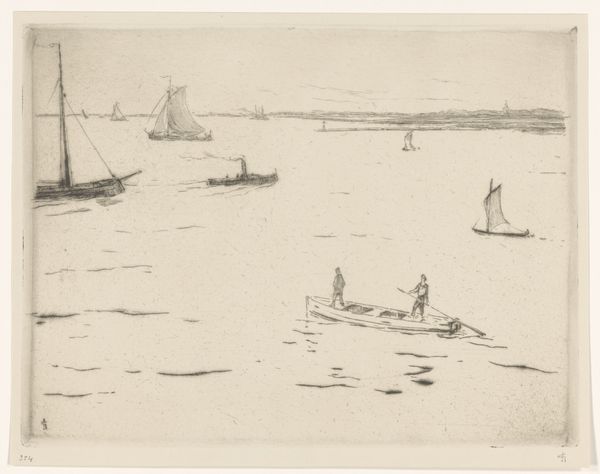
Dimensions: height 202 mm, width 131 mm
Copyright: Rijks Museum: Open Domain
Editor: So, this drawing, "Haventje met boten" by Eduard Karsen, created sometime between 1870 and 1922, is quite subtle. It's a pencil sketch, almost monochromatic, and very evocative. What aspects stand out to you? Curator: What immediately grabs my attention is the evidence of process. You can see the graphite marks so clearly. Think about the artist’s hand, the labor invested in this scene. This wasn't just a snapshot, but a constructed image created through careful, deliberate mark-making. How do you think this method contrasts with the rise of photography at the time? Editor: That's a good point. The prevalence of photography might have pushed artists to focus more on the act of creating, emphasizing their skills and choices. But what about the subject matter itself – boats in a harbor? Does the banality speak to anything? Curator: Absolutely! These aren't grand, heroic vessels; these are working boats. Consider the economics involved: fishing, trade, the livelihood of the community represented here. Karsen's focus brings to light the unseen labor connected with the sea, democratizing what art is, challenging what is normally viewed as art such as heroic paintings. This makes a strong social statement in contrast to other artworks. Does knowing this shift your reading? Editor: Yes, that's definitely changed how I see it. The pencil strokes aren't just lines anymore; they're like a record of work, of Karsen’s labor mirroring that of the boatmen. I find that profoundly more meaningful now. Curator: Exactly! We start to move away from the genius of the artist, and we consider what’s in front of us with a materialist perspective by seeing Karsen himself in context to other boatmen from that time. The sketch offers access to how goods were transported, the material process of maritime shipping at that time. Editor: It’s really fascinating how understanding the materials and the making process can reveal such deeper social and economic meanings! Curator: Indeed! Considering how the artist translates ordinary elements becomes central. Art provides a reflection of its world by analyzing the role of physical existence and material construction.
Comments
No comments
Be the first to comment and join the conversation on the ultimate creative platform.
